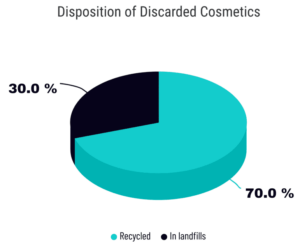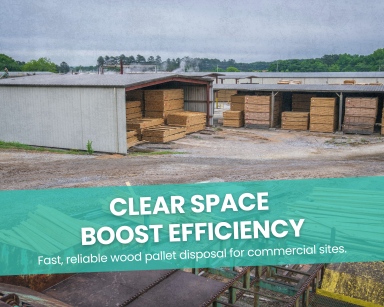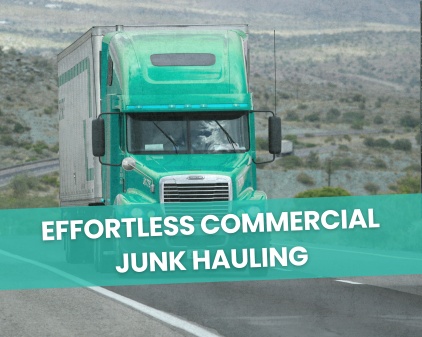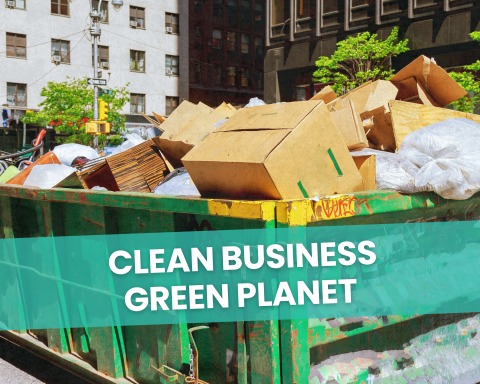Are cosmetics hazardous? Beauty’s Hidden Shadows
Every morning, as millions apply their favorite shade of lipstick or dab on that trusty foundation, a silent crisis brews. Cosmetics disposal, a term often glossed over, is now at the forefront of environmental concerns.
According to a 2022 report by the World Health Organization, an astonishing 70% of discarded cosmetics end up in landfills, contributing significantly to environmental degradation. But it’s not just about the planet. It’s about you, the consumer.
The very products that promise radiance and allure might be casting shadows on our health and the environment.
This article delves deep into the hidden dangers lurking in your makeup bag, the real cost of beauty, and how companies like Happen Ventures are pioneering solutions to address this pressing issue.
So, if you’ve ever wondered about the journey of your emptied lipstick tube or where that old mascara wand goes, you’re about to uncover some unsettling truths and, more importantly, the path forward.
Table of Contents
Cosmetics disposal: The Hidden Dangers in Your Makeup Bag
Cosmetics, for many, are an integral part of daily routines. Yet, the allure of these products often overshadows the potential risks they pose.
Every swipe of lipstick or dab of foundation might be hiding more than you think. Many cosmetics contain chemicals that, while making us look good, can have adverse effects on our health.
Beyond the immediate skin reactions, there’s a deeper concern about the long-term implications of these ingredients on our overall health and the environment.
Harmful Chemicals: More Common Than You Think
Recent studies, including those by the EWG, have highlighted the presence of chemicals like parabens, phthalates, and formaldehyde in many popular brands. These chemicals can accumulate over time, leading to potential health issues.
The cosmetic industry’s vastness and the lack of stringent regulations mean these harmful substances often go unnoticed.
Heavy Metals: The Silent Threat in Cosmetics disposal
Heavy metals such as lead, arsenic, and mercury have been found in cosmetics. Prolonged exposure can lead to serious health risks. These metals, often not listed on product labels, can lead to neurological issues and skin conditions.
The Fragrance Factor
While fragrances in cosmetics give them a pleasant aroma, they often contain a cocktail of chemicals. Many of these are not disclosed due to “trade secret” laws, leaving consumers in the dark about potential allergens or irritants.
- Phthalates: Commonly used to prolong the scent in fragrances, they have been linked to endocrine disruption and reproductive issues.
- Synthetic Musks: Found in many perfumed products, some studies suggest they might be hormone disruptors.
- Allergens: Fragrances are among the top five allergens worldwide, leading to skin reactions in many individuals.
Cosmetics disposal: The Real Cost of Beauty
The environmental toll of cosmetic waste is alarming. From overflowing landfills to chemical runoff affecting our water sources, the beauty industry has significant challenges to address.
Toxic Makeup
Allergic reactions, skin conditions, and even more severe health issues have been linked to toxic makeup. The long-term effects of these incidents are still being studied, making it a pressing issue.
The Microbead Menace
Microbeads, those tiny plastic particles found in exfoliating face washes, toothpaste, and other cosmetics, might seem harmless. However, their environmental impact is profound.
- Water Pollution: Being non-biodegradable, they end up in our oceans, harming marine life and entering the food chain.
- Toxic to Aquatic Life: Microbeads absorb toxins from water, which are then ingested by marine animals.
- Human Health Concern: As these particles enter the food chain, they can end up on our plates, leading to potential health risks.
Chemical Exposures
Chemicals like Polycyclic aromatic hydrocarbons (PAHs) and Petrolatum, found in many cosmetics, can lead to long-term chemical exposures.
These can result in severe health complications, emphasizing the need for the beauty industry to address these issues proactively.
Happen Ventures: Pioneering the Way for Safe Cosmetics Disposal
In a world where recycling and waste-to-energy solutions dominate the conversation around cosmetics disposal, Happen Ventures takes a refreshingly different approach.
Instead of focusing solely on the environmental aspect, they bridge the gap between surplus and need, ensuring that products find a second home where they’re most needed.
The Ethos of Donation Over Cosmetics disposal
At the heart of Happen Ventures’ approach is the belief that every cosmetic product, even if it’s surplus for one, can be a treasured possession for another.
By donating these products to communities in need, they not only prevent wastage but also bring a touch of beauty and self-care to those who might not have access to such products.
- Community Upliftment: Donating cosmetics uplifts the spirits of individuals, boosting their confidence and self-worth.
- Economic Benefits: By redirecting surplus to those in need, Happen Ventures also aids in reducing the economic burden on underprivileged communities.
A Rigorous Vetting Process
Ensuring the safety and quality of donated products is paramount. Happen Ventures has a stringent vetting process in place:
- Quality Checks: Every product is checked to ensure it meets the necessary quality standards.
- Safety First: Any product that is expired or deemed unsafe is responsibly disposed of, ensuring only the best reaches the end user.
Building Bridges with Charitable Partners
Collaboration is key to the success of Happen Ventures’ approach. By partnering with trusted charitable organizations, they ensure that the donated cosmetics reach the right hands.
- Local Partnerships: Working with local charities ensures that the products are distributed efficiently and reach those in genuine need.
- Feedback Loop: Regular feedback from these partners helps in refining the donation process, ensuring maximum impact.
The Bigger Picture
While cosmetics form a significant part of their donation drive, Happen Ventures’ vision goes beyond. They aim to create a world where surplus, be it cosmetics or other goods, finds its way to those who need it the most, fostering a culture of sharing and caring.
In essence, Happen Ventures is not just addressing the cosmetics disposal issue, they’re reshaping the way we view surplus, turning potential waste into a source of joy and comfort for many.
Conclusion
The beauty industry’s allure hides a myriad of challenges. With companies like Happen Ventures leading the charge, there’s hope for a sustainable future. By being informed and making responsible choices, we can contribute to a cleaner, healthier world.











